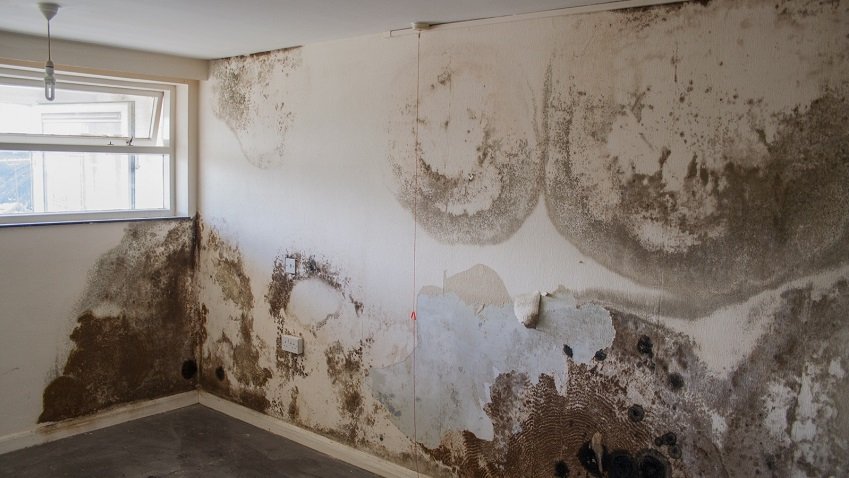Table of Contents Show
If you suspect you may have problems with dampness, consulting with a damp-proofing professional should be your top priority. Damp-proofing is the most effective way of preventing damp build up on your property.
Here we will discuss some signs of dampness; if you find any of them in your home, we recommend investigating further. Moisture meters are a good way to measure damp levels within properties.

5 Signs of Dampness That You Should Know
Damp Walls
A damp wall problem can usually be identified by the presence of damp walls which can appear dark or discolored. If you have access to the exposed masonry beneath your plaster, it will almost certainly feel wet if you have a damp problem.
However, in the case of rising dampness, there is one significant tell-tale sign to look for: it only occurs on the ground floor. Here are a few additional, more subtle signs of rising dampness in your home.
Presence of Wet Staining
The presence of damp staining and tide marks evaporation and salts from the ground cause both, and they can be seen up to 1 meter above the skirting board in some cases. It will be yellowish or brownish if the staining is still wet.
Read Also:
Peeling of Wallpaper
Wallpaper peeling off could be a sign the wallpaper paste needs replacing, but it could be something more serious. Because it peels closest to the skirting board first, peeling wallpaper caused by rising dampness is easy to identify because it peels with the corners turned up.
If the wallpaper feels saturated, this is a further indication of dampness being present.
Deterioration of Skirting
Skirting boards that have deteriorated over time are a tell-tale sign of dampness. Typically made of engineered timber or PVC, skirting boards are one of the first to be affected by moisture damage. It’s usually fairly easy to spot as they are so visible. Examine them to see if they are cracked, crumbly, or have fungus grown on their surface.
Some Other Signs
Salts are present in the plaster. There will be fluffy white deposits in the application and blistering patches on the wall when this happens.
The mold has a dark coloration to it. Oh no, it’s the dreaded black mold! Even though rising dampness is the most visible sign of all dampness types, it only increases dampness if localized up to 1 meter from the skirting board.
Despite the obvious signs of dampness, it can be challenging to determine what type of dampness you have and how severe it is. Consult with damp specialists like London Damp Solutions if you’re experiencing problems with dampness and mold.
Conclusion
The best way to protect your home from rising damp damage is to hire a professional damp-proof specialist to damp-proof it properly.
Over rendering, wall coatings can also be applied to provide an additional layer of protection. Masonry paint generally contains water, which does not have the same damp-proofing or weatherproofing properties as other exterior coatings. Damp proofing is a cost-effective solution for preventing moisture decay in the long term.









